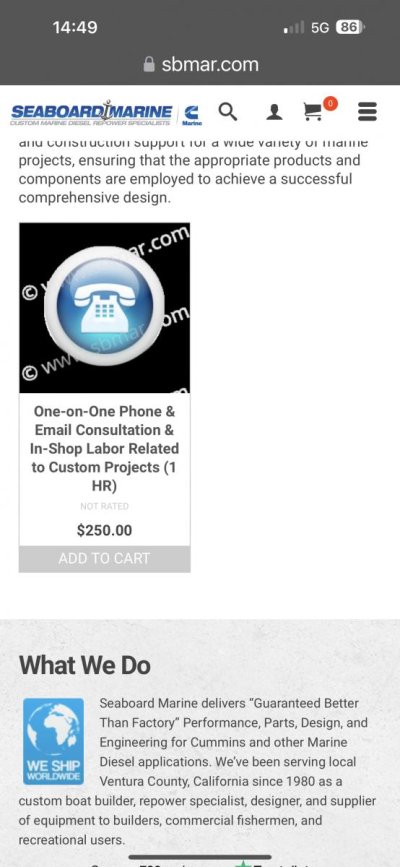Markai6768
Newbie
- Joined
- Jun 20, 2023
- Messages
- 2
I am considering trying regular (every time I return to port) fresh water flushing, but I have a concern that I hope you might be able to help me address.
I have a fresh water garden hose connection to the top of the Groco Sea strainer assembly (from Seaboard Marine) for fresh water flushing that should work quite well.
https://www.sbmar.com/product/groco-arg-series-bronze-cap-with-freshwater-flush/
However, when I connect my fresh water supply hose to the bronze fresh water flush cap, at idle (Cat 3126 engine), and begin to close the through hull raw water supply I can see bubbles forming throughout the water canister of the Groco sea strainer.
This raises the following questions:
1). I worry that I might be supplying insufficient water supply to properly lubricate the Sherwood (engine driven) raw water pump? Is this concern reasonable when the Sherwood pump is being supplied at idle by an average garden hose water supply?
2). Since the fresh water garden hose supply volume is clearly less than the water supplied by an open through hull, am I at much risk of contributing to engine and wet exhaust component overheat IF I run the engine at idle for approximately 5 minutes?
3). When you fresh water flush, do you leave the through hull open and put up with a mix of sea water/fresh water, or do you close the through hull to achieve 100% fresh water supply?
Cheers...
Marcus
I have a fresh water garden hose connection to the top of the Groco Sea strainer assembly (from Seaboard Marine) for fresh water flushing that should work quite well.
https://www.sbmar.com/product/groco-arg-series-bronze-cap-with-freshwater-flush/
However, when I connect my fresh water supply hose to the bronze fresh water flush cap, at idle (Cat 3126 engine), and begin to close the through hull raw water supply I can see bubbles forming throughout the water canister of the Groco sea strainer.
This raises the following questions:
1). I worry that I might be supplying insufficient water supply to properly lubricate the Sherwood (engine driven) raw water pump? Is this concern reasonable when the Sherwood pump is being supplied at idle by an average garden hose water supply?
2). Since the fresh water garden hose supply volume is clearly less than the water supplied by an open through hull, am I at much risk of contributing to engine and wet exhaust component overheat IF I run the engine at idle for approximately 5 minutes?
3). When you fresh water flush, do you leave the through hull open and put up with a mix of sea water/fresh water, or do you close the through hull to achieve 100% fresh water supply?
Cheers...
Marcus



